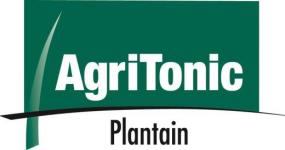AgriTonic
GRAZING TOLERANCE.

- Perenniality Perennial
- Grazing Seasons Autumn, Spring, Summer, Winter
AgriTonic is a forage plantain from the breeding programme that created Tonic; it maintains many of the seasonal growth features of Tonic while having an increased leaf number. During autumn establishment AgriTonic can have a greater density of leaves which may be not as large as Tonic’s.
AgriTonic has been bred from plants surviving our intense breeding process and we believe this has conferred some additional tolerance to grazing and other farm management stresses.
AgriTonic provides the ideal option for including in a general pasture mix at 2-3 kg/ha where grazing pressure is often unnoticed and intense. In high density legume mixes AgriTonic also provides well tillered plants that should complement this style of grazing system.

Sowing & Establishment
Advantages and Disadvantages of Using Different AgriTonic Options
| Advantages | Disadvantages | |
| Pure Species | Dedicated weed control and grazing management. Maximum benefit from herbs. | Slightly slower winter growth rates than ryegrass. Requires nitrogen fertiliser |
| AgriTonic with clover | Same as above with; Increased nitrogen. Clover fills sward gaps | Slightly slower winter growth rates than ryegrass. Potential bloat risk if clover dominates. Reduced weed control options. |
Suggested Mixes
Dairy Pasture Example Mix
| Rate (kg/ha) | |
|---|---|
| ONE50 AR37 or AR1 | 18 |
| Mainstay white clover | 3 |
| Tribute white clover | 2 |
| AgriTonic plantain | 2 |
| TOTAL | 25 |
Sheep and Beef Example Mix
| Rate (kg/ha) | |
|---|---|
| Samson AR37 or AR1 | 18 |
| Savvy Cocksfoot | 3 |
| Mainstay white clover | 3 |
| Tribute white clover | 2 |
| AgriTonic plantain | 2 |
| TOTAL | 28 |
Italian Pasture Example Mix
| Rate (kg/ha) | |
|---|---|
| Asset AR37 | 14 |
| AgriTonic plantain | 1-3 |
| TOTAL | 15-17 |
Legume Pasture Example Mix
| Rate (kg/ha) | |
|---|---|
| AgriTonic plantain | 8 |
| Relish red clover | 6 |
| Tribute white clover | 3 |
| TOTAL | 17 |
Specialist Stand
|
Rate (kg/ha) |
|
| AgriTonic plantain | 12 |
|---|
Broadcasting
| Rate (kg/ha) | |
| AgriTonic plantain | 4 |
|---|
Rotation Products

Read a case study
Agricom Case Studies
